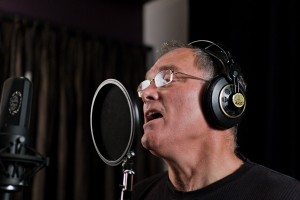 Even with pop filters in front of a microphone, plosives (pops) can still be an issue with some vocalists.
Even with pop filters in front of a microphone, plosives (pops) can still be an issue with some vocalists.
However, there is a relatively simple fix that can quickly reduce or eliminate those loud pops from your vocal tracks. Use a high-pass filter, or low shelving EQ, to roll off the low end of the vocal track. In most cases, a steep roll off of all frequencies below around 100 to 150 hz should get rid of the pop without affecting the sound of the vocal too much.
However, in extreme situations, you may need to extend that roll off well up into the 200 to 300 hz range, which will definitely thin out the sound of the vocal. In these types of situations, I will usually automate the EQ and switch it on just for the word where the plosive is, and then immediately turn it off (I automate the insert Bypass in Cubase). If switching and EQ on and off causes a glitch with the software you are, you can also simply automate the roll off frequency. Most times I want to roll off pretty much everything below 80 hz on a vocal anyway (if it wasn't already done during recording), so I can just automate that frequency during the mix and quickly ramp it up and down just to catch the plosive.
If you're able to do this quickly enough on just the plosive part of the word, you can effectively eliminate most of the pop without the listener noticing any change in the vocal sound.
Of course, it's always better to try to eliminate plosives at the recording stage! Always use a pop filter, and use the built-in high-pass filter on your microphone (if available) and/or microphone preamp. If you are still getting a lot of plosives while recording, move the microphone out of the direct path of air from the vocalist's mouth. Put the microphone slightly above or below the mouth, or slightly off to one side or the other. Another trick is to have the vocalist turn their head slightly when singing words with big plosives, so that burst of air doesn't go straight into the microphone. If you still catch a large plosive, try to punch in that section after trying one of these methods. But, if it's an otherwise perfect, one time only take, then using the simple EQ tricks I outlined here can almost always save the take!